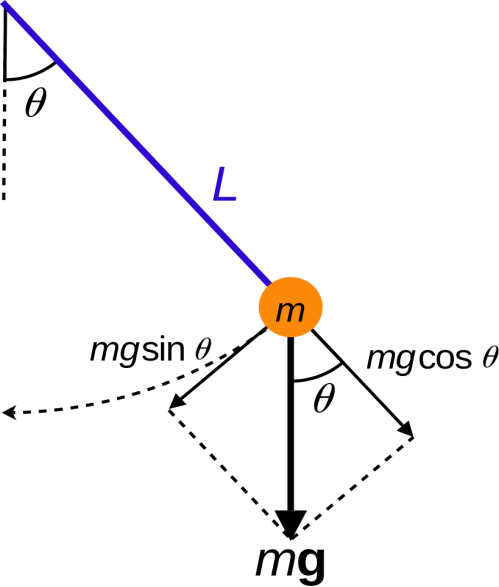Question
Question: Define ideal simple pendulum. Show that under certain conditions, a simple pendulum performs linear ...
Define ideal simple pendulum. Show that under certain conditions, a simple pendulum performs linear simple harmonic motion.
Solution
Whenever the force is directly proportional to the negative of displacement, then it means that the body will execute a simple harmonic motion.
Complete step by step answer:
Ideal simple pendulum: An ideal simple pendulum is one which consists of a point mass suspended by a weightless inextensible perfectly flexible thread and free to vibrate without any friction.
Simple pendulum executing simple harmonic motion:
Let the mass of the bob is m, and L is the length to which it is suspended from a rigid support.
Let θ be the small angle in the vertical plane to which it is displaced, g is the acceleration due to gravity. Now resolves the weight components in vertical and horizontal components.
The two resolved components are mgsinθ andmgcosθ.
Now the restoring force is given by-
F=−mgsinθ
Now as θ is very small therefore,sinθ≈θ
F=−mgθ …………..(1)
And θ=Lx
Now substituting this in eq.(1) we get,
F=−mg(Lx)
⇒F∝(−x)
Since the restoring force is directly proportional to the negative of the displacement, hence the motion of the simple pendulum is simple harmonic in nature (SHM).

Conditions for a simple pendulum: Followings are the conditions of a simple pendulum-
(i) Bob must be a point heavy mass.
(ii) It must be suspended with a thread of negligible weight.
(iii) It must be supported by rigid support.
(iv) The amplitude should be very small.
Note:
Also remember that the acceleration is given by-
ma=−mgLx ⇒a=−Lxg
Magnitude of Acceleration per unit displacement xa=Lg
Time period is given by-
T=Lg2π ⇒T=2πgL
